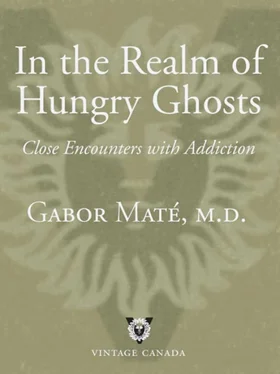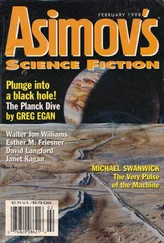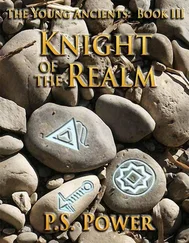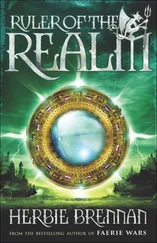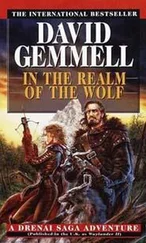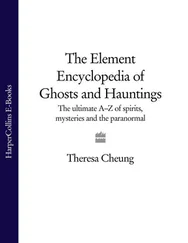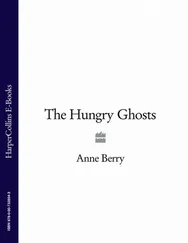4. C. Heim et al., “Pituitary-Adrenal and Autonomic Responses to Stress in Women after Sexual and Physical Abuse in Childhood,” JAMA 284(5) (2 August 2000): 592–97.
5. D. Morgan et al., “Social Dominance in Monkeys: Dopamine D2 Receptors and Cocaine Self-administration,” Neuroscience 5(2) (2002): 169–74; S.P. Martin et al., “Effects of Dominance Rank on d -Amphetamine-Induced Increases in Aggression,” Pharmacology, Biochemistry & Behavior 37 (1990): 493–96.
6. Robert Matas, “Consider Legalizing Drug Use, Panel Says,” The Globe and Mail, 17 November 2006), S-6.
7. http://www.csdp.org/publicservice/halsted.pdf.
8. Rod Mickleburgh and Gloria Galloway, “Storm Brews over Drug Strategy,” The Globe and Mail, 15 January 2007.
CHAPTER 28 A NECESSARY SMALL STEP
1. Pamela Fayerman, “Unhealthy Lifestyles Cost B.C. $1.8B a Year,” The Vancouver Sun, 5 October 2006, 1.
2. Canada, Department of Justice Canada, NewsRoom, website of the Department of Justice, 19 February 2001; http://www.justice.gc.ca/en/news/index.html.
3. Gary Mason, “Insight on Insite from Across the Pond,” The Globe and Mail, 24 August 2006, S-1.
4. B. Fischer and J. Rehm, “The Case for a Heroin Substitution Treatment in Canada,” Canadian Journal of Public Health 88 (1997): 367–70.
5. Jane Armstrong, “Is Free Heroin Just a Quick Fix?” The Globe and Mail, 31 January 2005, 1.
6. Peter McKnight, “Give the Addicts Their Drugs,” The Vancouver Sun, 29 April 2006, C5.
7. G. Alan Marlatt, Harm Reduction: Pragmatic Strategies for Managing High Risk Behaviors (New York: The Guildford Press, 1998), 40.
8. A. D.-M. Uchenhagen et al., “Prescription of Narcotics for Heroin Addicts: Main Results of the Swiss National Cohort Study Zurich,” Institute of Social and Preventative Medicine, University of Zurich, 1999.
9. D. Small and E. Drucker, “Policy Makers Ignoring Science and Scientists Ignoring Policy: The Medical Ethical Challenges of Heroin Treatment,” Harm Reduction Journal 3(16) (2006).
10. “The NAOMI Project,” The Vancouver Sun, 28 January 2005, A5.
11. Evan Wood et al., “Summary of Findings from the Evaluation of a Pilot Medically Supervised Safe Injecting Facility,” CMAJ 175(11) (21 November 2006): 1399–1404.
12. Rod Mickleburgh, “RCMP Takes Heat over Insite,” The Globe and Mail, 12 December 2006, S2.
13. “Harper Has a Duty to Gather All the Evidence About the Injection Site,” The Vancouver Sun, 8 June 2006, A22.
14. Camille Bains, “Insite Expands with Onsite Detox Centre for Addicts,” The Globe and Mail , August 27, 2007, S-1
15. Mark A. Wainberg, “The Need to Promote Public Health in the Field of Illicit Drug Use,” CMAJ 175(11) (21 November 2006): 1395–96.
16. Allan Woods, “Ottawa Ignores Support for Injection Sites,” The Vancouver Sun, 6 November 2006, A1–A2.
CHAPTER 29 THE POWER OF COMPASSIONATE CURIOSITY
1. Pema Chödrön, Comfortable with Uncertainty: 108 Teachings (Boston: Shambala, 2002), 9–10, 57–58.
2. Gabor Maté, Scattered Minds: A New Look at the Origins and Healing of Attention Deficit Disorder (Toronto: Vintage Canada, 2000), 4.
3. Anthony Storr, Solitude (London: HarperCollins, 1997), 22.
CHAPTER 30 THE INTERNAL CLIMATE
1. E.A. Maguire et al., “Navigation Expertise and the Human Hippocampus: A Structural Brain Imaging Analysis,” Hippocampus 13(2) (2003): 250–59.
2. Antonio Damasio, Descartes’ Error: Emotion, Reason, and the Human Brain (New York: G.P. Putnam & Sons, 1994), 112.
3. Marian Cleeves Diamond, Enriching Heredity (New York: The Free Press, 1988), 150.
4. Ibid., 157.
5. Ibid., 164.
6. B. Kolb and I. Q. Whishaw, “Brain Plasticity and Behavior,” Annual Review of Psychology 49 (1998): 43–64.
7. G. Kempermann and Fred H. Gage, “New Nerve Cells for the Adult Brain,” Scientific American (May 1999): 48–53.
8. Jeffrey M. Schwartz and Sharon Begley, The Mind and the Brain: Neuroplasticity and the Power of Mental Force (New York: ReganBooks, 2002), 252–53.
9. Schwartz and Begley, The Mind and the Brain, 289.
10. J.M. Schwartz, H.P. Stapp and M. Beauregard, “Quantum Physics in Neuroscience and Psychology: A Neurophysical Model of Mind-Brain Interaction,” Philosophical Transactions of the Royal Society B (2005): 1309–27.
11. Walter Kaufmann, trans., Basic Writings of Nietzsche (New York: Modern Library, 1992), 685–86.
12. Daniel L. Schacter, Searching for Memory: The Brain, the Mind and the Past (New York: Basic Books, 1996), 190.
13. Wilder Penfield, The Mystery of the Mind (Princeton, NJ: Princeton University Press, 1975), 55, 62, 114.
14. Schwartz, Stapp and Beauregard, “Quantum Physics in Neuroscience and Psychology,” 1309–27.
15. Mark Epstein, Thoughts without a Thinker: Psychotherapy from a Buddhist Perspective (New York: BasicBooks, 1995), 111.
16. Daniel Siegel, The Mindful Brain: Reflection and Attunement in the Cultivation of Well-Being (New York: W. W. Norton, 2007), 25.
CHAPTER 31 THE FOUR STEPS, PLUS ONE
1. Jeffrey M. Schwartz, Brain Lock: Free Yourself from Obsessive-Compulsive Behavior (New York: ReganBooks, 1996), 11.
2. M. Schwartz and Sharon Begley, The Mind and the Brain: Neuroplasticity and the Power of Mental Force (New York: ReganBooks, 2002), 224.
3. Schwartz, Brain Lock, 41.
4. Ibid., 71.
5. Ibid., 97.
CHAPTER 32 SOBRIETY AND THE EXTERNAL MILIEU
1. Kevin Griffin, One Breath at a Time: Buddhism and the Twelve Steps (Emmaus, PA: Rodale Inc., 2004), 92.
2. B. McEwen, “Protective and Damaging Effects of Stress Mediators,” New England Journal of Medicine 338(3) (15 January 1998).
3. Marian Cleeves Diamond, Enriching Heredity (New York: The Free Press, 1988), 163.
CHAPTER 33 A WORD TO FAMILIES, FRIENDS AND CAREGIVERS
1. Edward L. Deci, Why We Do What We Do: Understanding Self-Motivation (New York: Penguin Books, 1995), 30.
2. Maia Szalawitz, “When the Cure Is Not Worth the Cost,” The New York Times, 11 April 2007, A21.
3. Thomas De Quincey, Confessions of an English Opium Eater (Ware, Hertfordshire: Wordsworth Classics, 1995), 18–19.
4. Byron Katie, Loving What Is: Four Questions That Can Change Your Life (New York: Three Rivers Press, 2002), 4–5.
CHAPTER 34 THERE IS NOTHING LOST
1. Julia Kristeva, Black Sun: Depression and Melancholia, trans. L.S. Roudiez (New York: Columbia University Press, 1989), 5.
2. Eckhart Tolle, The Power of Now: A Guide to Spiritual Enlightenment (Vancouver: Namaste Publishing, 1997), 23.
3. D. Tankersley et al., “Altruism Is Associated with an Increased Neural Response to Agency,” Nature Neuroscience 10 (2007): 150–51.
4. Victor Frankl, Man’s Search for Meaning (New York: Washington Square Press, 1985), 164.
5. Joseph Campbell, The Hero with a Thousand Faces (Princeton, NJ: Princeton University Press, 1972), 285, 286.
6. A.H. Almaas, Diamond Heart, Book One: Elements of the Real in Man (Berkeley, CA: Diamond Books, 1987), 21.
7. Edmund Spenser, The Faerie Queene (New York: Penguin Books, 1987) canto v, book 2, line 39.
8. St. Augustine, Confessions, trans. Garry Wills (New York: Penguin Books, 2006), 41.
APPENDIX I ADOPTION AND TWIN STUDY FALLACIES
Читать дальше
